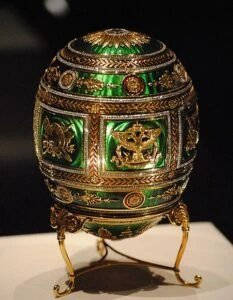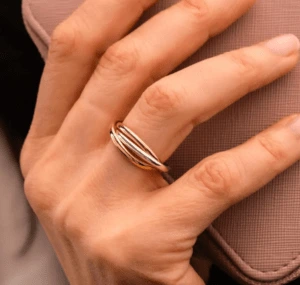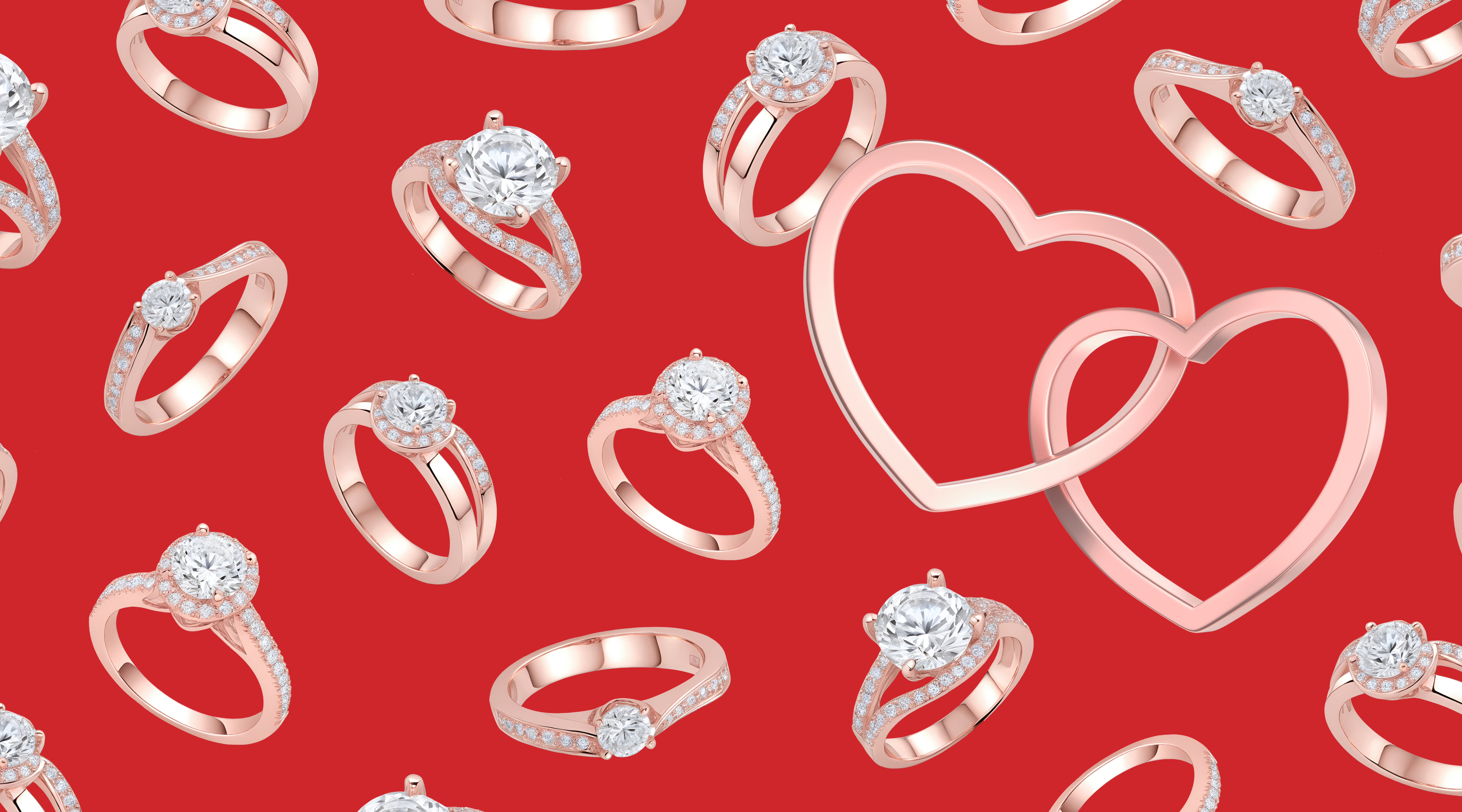In honor of Valentine’s Day, we’ve gathered some fun facts about the most romantic gold alloy: rose gold. While we love all forms of precious metals (don’t sleep on silver), rose gold has a unique history that’s worth exploring.
Gold + Copper = Rose Gold
Rose gold is often associated with love and romance. It’s an alloy comprised of gold and copper, and sometimes a small amount of silver. The standard proportions for 18k rose gold, for example, are roughly 75% gold, 22.5% copper, and 2.5% silver. Higher-karat alloys (like 18k and 22k) with more gold have a subtle rosy hue, whereas 14k alloys with less gold have a deeper red tint, because they are made with higher levels of copper.
Copper does more than give rose gold its distinctive hue – it also strengthens the alloy, enhancing its resistance to scratches and dents. In fact, rose gold is more durable than both yellow and white gold of the same karat, making it an excellent choice for life-long, daily-wear pieces like engagement and wedding rings.
How Much is Rose Gold Worth?
Sometimes people ask us: Is rose gold worth more than yellow or white gold? While a particular piece of jewelry may be “worth more” from an artistic perspective, rose gold is not “worth more” because of its metal components. That said, the value of a particular piece of jewelry depends on its metallic components and karat value. White gold, for example, is an alloy of gold and silver. Because silver is more expensive than copper, a white gold ring will be valued more than a rose gold ring of the same karat value. As with most jewelry, its scrap value depends primarily on the percentage of pure gold it contains and the gold’s current market prices.
When it comes to purity, 14k and 18k are the most common types of rose gold. Yellow gold, however, is available in a wider range, typically from 10k to 22k. All in all, 14k is the most popular choice for gold jewelry because it strikes a nice balance between durability and affordability.
Gold + Copper = Rose Gold
Rose gold is often associated with love and romance. It’s made of gold and copper, and sometimes a small amount of silver. The standard proportions for 18k rose gold, for example, are roughly 75% gold, 22.5% copper, and 2.5% silver. Higher-karat alloys (like 18k and 22k) with more gold have a subtle rosy hue, whereas 14k alloys with less gold have a deeper red tint.
Copper does more than give rose gold its distinctive hue – it also strengthens the alloy, enhancing its resistance to scratches and dents. In fact, rose gold is more durable than both yellow and white gold of the same karat, making it an excellent choice for life-long, daily-wear pieces like engagement and wedding rings.

Russian Roots
Rose gold was invented in the early 19th century by renowned Russian goldsmith and jeweler Peter Carl Fabergé, best known for his famous Fabergé Eggs. The alloy was so popular in imperial Russia that it was originally called ‘Russian gold.’
Rose gold became a stylish choice for fine jewelry in the Victorian era, and by the 1920s it made its way into American popular culture. Bold designs and multi-colored pieces featuring rose gold were prominent throughout the Art Deco period.
The Rise of Rose Gold Engagement Rings
Although rose gold was popular at the time, platinum was the preferred metal for engagement rings during the Art Deco period, as its strength allowed for the intricate designs of the era. However, when World War II began, platinum was declared a strategic material – its uses span far beyond jewelry – and was restricted for military and industrial use. This led to a rise in the popularity of gold engagement rings, including rose gold, during the 1940s.
Rose gold remains popular, no longer out of necessity, but as a fashion choice. Celebrities like Mandy Moore, Blake Lively and Lauren Conrad have all sported rose gold engagement rings. Aside from its unique rosy hue, rose gold is a practical ring choice because it pairs well with almost everything, and high-quality pieces will last a lifetime.

Cartier and the Trinity Ring
Cartier’s iconic Trinity Ring, featuring intertwined white, yellow and rose gold bands, helped elevate rose gold’s status in fine jewelry. First introduced at the 1925 Paris Exposition, the design debuted alongside other bold and colorful creations that defined the era’s opulent style.
Mixed-metal, trinity-style rings, bracelets and even necklaces have remained popular to this day. In fact, it’s easy to find spin-offs of Cartier’s Trinity from smaller jewelers that offer a similar aesthetic without breaking the bank.
The trinity design has stood the test of time because it’s versatile, genderless and symbolic. Some say that the rose gold stands for love, white gold stands for friendship and yellow gold stands for loyalty. Others see the three golds as emblems of diversity and universality.
Buying and Selling Rose Gold
Thinking about buying some rose gold for your Valentine? Check out our guide to different types of gold jewelry and you’ll be armed with knowledge in no time.
Looking to sell some broken, mismatched or unwanted gold jewelry? With today’s metal prices, even just a small amount of gold scrap could be worth more than you think. Garfield Refining is North America’s premier precious metals refinery, providing our clients with the highest possible payments for gold and other precious metals. Based in Philadelphia, we’ve been servicing jewelers and individual sellers since 1892.
Ready to sell your precious metal scrap? Get started with a free shipping label!

